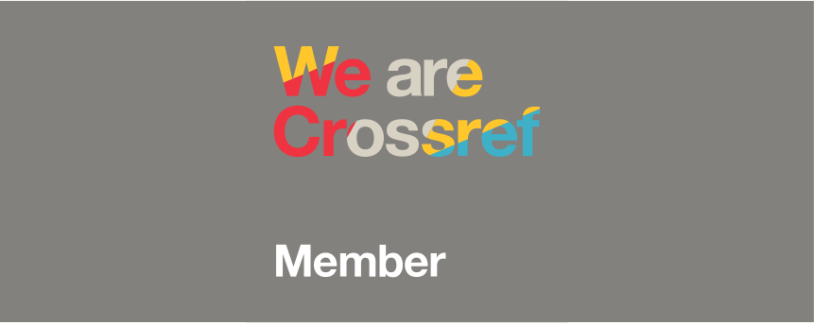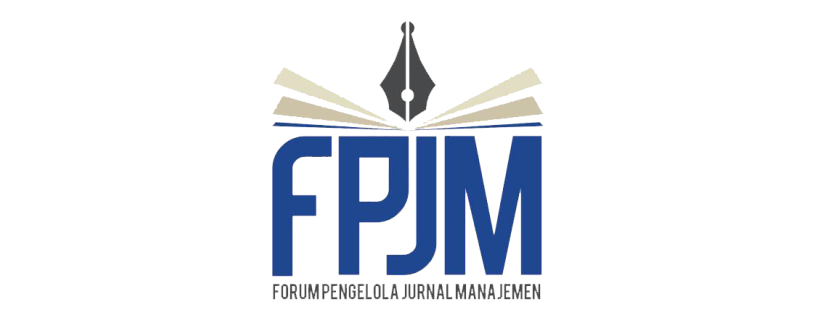MSME Dexterity Analysis: Absorptive Capacity and Knowledge Stickiness in Endemic Era of Depok MSME’s
DOI:
https://doi.org/10.26905/jmdk.v11i1.10358Keywords:
Absorptive Capacity, Knowledge Stickiness, MSME’s AgilityAbstract
This study aims to examine and investigate the effect of absorptive capacity on MSME’s agility, the effect of knowledge stickiness on the agility of MSME’s, and identify the key factors forming absorptive capacity and knowledge stickiness in MSME’s in Depok City. Testing the impact of MSME’s agility on economic resilience. Data were collected through a survey method with MSME’s in Depok City as the research population. The data analysis method using Partial Least Square (PLS). The study found that absorptive capacity had a significant negative effect on MSME’s agility, and knowledge stickiness had a significant positive effect on MSME’s agility. MSME’s agility is influenced by these two variables by 94.5% and the rest is influenced by other factors.Downloads
References
Ahmad, N. H., & Seet, P. (2009). Dissecting Behaviours Associated with Business Failure: A Qualitative Study of SME Owners in Malaysia and Australia. Asian Social Science, 5(9), 98-103. https://doi.org/10.5539/ass.v5n9p98
Amini, A. (2004). The distributional role of small business in development. In International Journal of Social Economics, 31(4), 370-383 https://doi.org/10.1108/03068290410523395
Andersen, P. H. (1999). Organizing international technological collaboration in subcontractor relationships: An investigation of the knowledge-stickiness problem. Research Policy, 28(6), 625-642. https://doi.org/10.1016/S0048-333(99)00013-X
CDASED. (1999). Business development services for SMEs: Preliminary guidelines for donor-funded interventions. Committee of Donor Agencies for Small Enterprise Development.
Cohen, W. M., & Levinthal, D. A. (1990). Absorptive Capacity: A New Perspective on Learning and Innovation. Administrative Science Quarterly, 35(1),128-152. https://doi.org/10.2307/2393553
Fitriasari, F. (2020). How do Small and Medium Enterprise (SME) survive the COVID-19 outbreak? Jurnal Inovasi Ekonomi, 5(02). 55-62. https://doi.org/10.22219/jiko.v5i3.11838
Gourinchas, P. O., Kalemli-Ozcan, S., Penciakova, V., & Sander, N. (2020). Covid 19 and SME Failures. National Bureau of Economic Research, 27877(1), 1–9. https://doi.org/https://doi.org/https:www.nber.org/papers/w27877
Indarti, N. (2010). The Effect of Knowledge Stickiness and Interaction on Absorptive Capacity: Evidence from furniture and software small- and medium-sized enterprises in Indonesia. PhD Thesis.
Indarti, N., & Langenberg, M. (2004). Factors affecting busines success among SMEs: Empirical evidences from Indonesia.
Indarti, N., & Rostiani, R. (2008). Intensi Kewirausahaan Mahasiswa: Studi Perbandingan antara Indonesia, Jepang dan Norwegia 1. In Jurnal Ekonomi dan Bisnis Indonesia. 23 (4), 369-384.
Kim, L. (1998). Crisis Construction and Organizational Learning: Capability Building in Catching-up at Hyundai Motor. Organization Science, 9(4), 427-534 https://doi.org/10.1287/orsc.9.4.506
Mazzarol, T., Volery, T., Doss, N., & Thein, V. (1999). Factors influencing small business start-ups: A comparison with previous research. International Journal of Entrepreneurial Behaviour & Research, 5(2). https://doi.org/10.1108/13552559910274499
Moons, S. J. V., & van Bergeijk, P. A. G. (2017). Does Economic Diplomacy Work? A Meta-analysis of Its Impact on Trade and Investment. World Economy, 40(2),48-63. https://doi.org/10.1111/twec.12392
Mowery, D. C., & Oxley, J. E. (1995). Inward technology transfer and competitiveness: The role of national innovation systems. Cambridge Journal of Economics, 19(1), 67-93. https://doi.org/10.1093/oxfordjournals.cje.a035310
Nonaka, I., & Takeuchi, H. (1995). Knowledge-Creating Company. Knowledge-Creating Company, December 1991.
Sharifi, H., Ismail, H. S., & Reid, I. (2006). Achieving agility in supply chain through simultaneous “design of†and “design for†supply chain. Journal of Manufacturing Technology Management, 17(8), 1078-1098. https://doi.org/10.1108/17410380610707393
Sheng, T. Y., Shamsudin, M. N., Mohamed, Z., Abdullah, A. M., & Radam, A. (2008). Complete demand systems of food in Malaysia. Agricultural Economics, 54(10), 457-475. https://doi.org/10.17221/279-agricecon
Swafford, P. M., Ghosh, S., & Murthy, N. (2006). The antecedents of supply chain agility of a firm: Scale development and model testing. Journal of Operations Management, 24(2), 177-188 https://doi.org/10.1016/j.jom.2005.05.002
Von Hippel, E. (1994). “Sticky Information†and the Locus of Problem Solving: Implications for Innovation. Management Science, 40(4), 429-548. https://doi.org/10.1287/mnsc.40.4.429
Yusuf, Y. Y., Sarhadi, M., & Gunasekaran, A. (1999). Agile manufacturing: the drivers, concepts and attributes. International Journal of Production Economics, 62(1), 33-43. https://doi.org/10.1016/S0925-5273(98)00219-9
Zahra, S. A., & George, G. (2002). Absorptive capacity: A review, reconceptualization, and extension. In Academy of Management Review 27(2), 185-203. https://doi.org/10.5465/AMR.2002.6587995
Downloads
Published
Issue
Section
License
Authors who publish with this journal agree to the following terms:
(1)Â Copyright of the published articles will be transferred to the journal as the publisher of the manuscripts. Therefore, the author confirms that the copyright has been managed by the journal.
(2) Publisher of Jurnal Penelitian is University of Merdeka Malang.
(3) The copyright follows Creative Commons Attribution–ShareAlike License (CC BY SA): This license allows to Share — copy and redistribute the material in any medium or format, Adapt — remix, transform, and build upon the material, for any purpose, even commercially.












